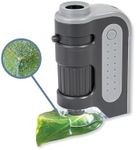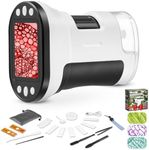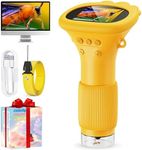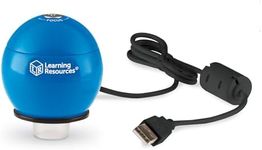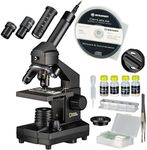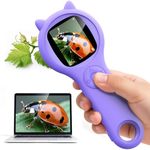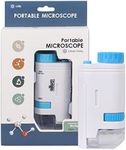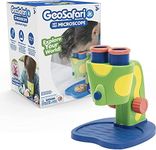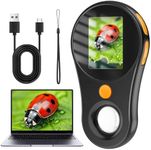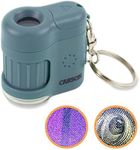Buying Guide for the Best Handheld Microscope For Kids
Choosing a handheld microscope for kids can be a fun and educational experience. These devices are designed to spark curiosity and introduce children to the world of science by allowing them to explore the microscopic details of everyday objects. When selecting a microscope, consider the child's age, interests, and the level of detail they wish to explore. A good handheld microscope should be easy to use, durable, and provide clear images to keep young minds engaged.Magnification PowerMagnification power indicates how much larger the microscope can make an object appear. This is important because it determines the level of detail a child can see. Handheld microscopes for kids typically range from 20x to 200x magnification. For younger children or beginners, a lower magnification (20x-60x) is sufficient to explore basic details. As the child's interest grows, higher magnification (100x-200x) can reveal more intricate details. Choose a magnification level that matches the child's curiosity and ability to understand what they are observing.
Ease of UseEase of use refers to how simple it is for a child to operate the microscope. This is crucial because a complicated device can discourage use and learning. Look for features like a simple focus mechanism, intuitive controls, and a lightweight design. Some models may have a single button operation or automatic focus, which can be ideal for younger children. Consider the child's age and dexterity when choosing a microscope to ensure they can use it independently and confidently.
DurabilityDurability is about how well the microscope can withstand the rough handling typical of children's use. This is important to ensure the device lasts and remains functional over time. Handheld microscopes for kids should be made from sturdy materials, such as reinforced plastic, and have a design that can endure drops and bumps. If the child is particularly young or tends to be rough with toys, prioritize models known for their robust construction.
PortabilityPortability refers to how easy it is to carry and use the microscope in different locations. This is important for children who like to explore both indoors and outdoors. A portable microscope should be lightweight and compact, making it easy for a child to hold and transport. Some models come with a carrying case or strap, which can be useful for outdoor adventures. Consider where the child will most likely use the microscope and choose a model that fits those environments.
Image QualityImage quality determines how clear and detailed the viewed objects appear through the microscope. This is important for maintaining a child's interest and ensuring they can see the details they are curious about. Look for microscopes with good lens quality and adequate lighting, as these factors contribute to better image clarity. For children who are just starting, basic image quality is sufficient, but as they become more interested, higher quality lenses and adjustable lighting can enhance their experience.
Power SourceThe power source refers to how the microscope is powered, which can affect its usability and convenience. Handheld microscopes for kids may use batteries or be rechargeable. Battery-powered models are convenient for on-the-go use but require regular battery replacements. Rechargeable models are more environmentally friendly and cost-effective in the long run but need access to a power source for charging. Consider the child's usage habits and the availability of charging options when choosing the power source.

